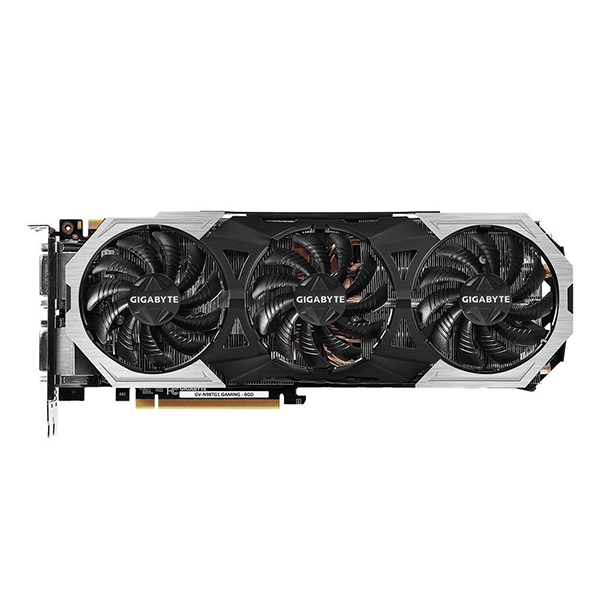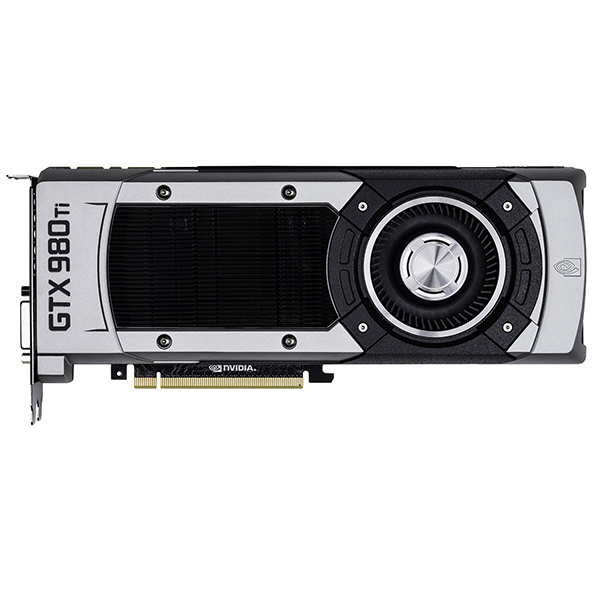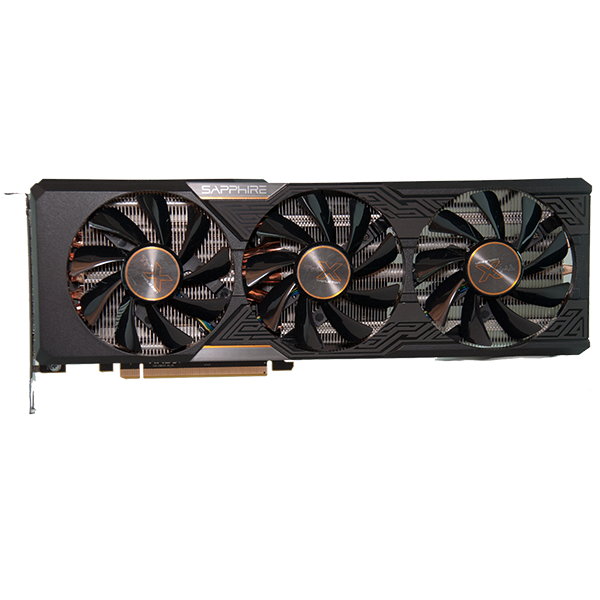Corsair Hydro GFX GeForce GTX 980 Ti Review
Corsair doesn't like tackling a new market unless it can offer a premium product. So when the company wanted to make a graphics card, it partnered with MSI to create a high-end stunner.
Why you can trust Tom's Hardware
How We Test
In order for us to compare results between cards reviewed by any of our reviewers, Tom's Hardware standardized the test bench that we all use. By doing this, each of our locations can have different sets of cards and still compare from the pool of results that any of us have obtained. Starting with an MSI X99S XPower motherboard, each test bench has an Intel Core i7-5930K overclocked to 4.2GHz, 16GB of Crucial Balistix Sport DDR4, two Crucial 500GB SSDs and an 850W power supply from be quiet!.
Software And Drivers
The last GPU review we published covered Gigabyte's GeForce GTX 980 Ti Xtreme Gaming. In that story, we used Nvidia's 358.91 driver, which was current at the time. We noticed power consumption was higher than expected, though. As it turns out, a bug in the company's software caused this anomaly. Igor Wallossek from Tom's Hardware DE discovered that GeForce driver 358.87 and up have an idle bug when Maxwell GPUs are paired with the X99 platform.
We tested the latest build to see if the problem persists, and unfortunately, it does. For that reason, and because our benchmark suite is old enough to not require the hot-fix changes, we ran all of this review's tests using the last driver unaffected by the idle bug, 355.65.
Comparison GPUs
We've already shown that AMD's Radeon R9 295X2 outperforms a single GeForce GTX 980 Ti, even when the 980 Ti is aggressively overclocked. We also know that a pair of GTX 970s delivers similar performance, incurring higher power consumption and greater acoustic output in the process. For this review, we decided that re-running those tests wasn't important. As a result, today's comparative data is more succinct.
Gigabyte's take on the 980 Ti did make the cut, of course, as did Zotac's 980 Ti AMP! Extreme, which you'll see reviewed on its own soon. I didn't have a reference GeForce GTX 980 Ti on-hand, but I was able to manually set Corsair's card to Nvidia's reference specs to approximate that baseline performance level.
Getting our hands on more AMD Fiji-based cards has proven to be difficult. Most of what we've tested has to end up going back. A Radeon R9 Fury X would be the natural comparison against Corsair's liquid-cooled 980 Ti, but my remote lab doesn't have a long-term sample. Although we can't test AMD's latest drivers, at least we have older results from Sapphire's Fury Tri-X to include.
We chose not to bother with the R9 390X or GTX 980; both cards are a lot slower than Nvidia's GeForce GTX 980 Ti. For clarity on that statement, please refer to the gaming benchmarks section of the Gigabyte GTX 980 Ti Xtreme Gaming WindForce review.
Get Tom's Hardware's best news and in-depth reviews, straight to your inbox.
| Direct X | DirectX 11 |
|---|---|
| Graphics Drivers | Sapphire Radeon R9 Fury Tri-X: AMD Catalyst 15.15 Gigabyte GeForce GTX 980 Ti Xtreme Gaming: GeForce Driver 355.65 Corsair GeForce GTX 980 Ti Hydro GFX: 355.65 |
Benchmarks
| Benchmarks | Header Cell - Column 1 |
|---|---|
| Middle-earth: Shadow of Mordor | Built-in benchmark, 40-sec Fraps, Ultra preset |
| Battlefield 4 | Custom THG Benchmark, 100-sec Fraps, Ultra preset |
| Metro Last Light | Built-in benchmark, 145-sec Fraps, Very High preset, 16x AF, Normal motion blur |
| Tomb Raider | Version 1.01.748.0, Custom THG Benchmark, 40-sec Fraps, Ultimate preset |
| Far Cry 4 | Version 1.10.0, Custom THG benchmark, 60-sec Fraps, Ultra preset |
| Grand Theft Auto V | Build 617, Online 1.32, In-game benchmark sequence #5, 110-sec Fraps, FXAA: On, MSAA: 2x, Texture Quality: Very High, Shader Quality: Very High, Shadow Quality: High, Reflection Quality: Very High, Water Quality: High, Particles Quality: Very High, Grass Quality: High, Soft Shadows: Softer, Post FX: Very High, Anisotropic Filtering: 16x |
Noise
To test for noise, a handheld decibel meter records acoustic output two inches behind the graphics card's I/O bracket. The instrument has a floor of 35dB; anything lower and it registers 0dB. To represent a recording that comes back as 0dB, but clearly isn't silent, the graph is made to indicate 34dB. When no sound is generated (such as when the fans stop spinning in a semi-passive mode), the graph shows 0dB.
Power
To test power consumption using our reference platform, a bit of creative math is needed. Since Haswell-E processors don’t have integrated GPU cores, we can’t boot the system without a discrete board installed to get a baseline. We are able to estimate consumption based on the approximate power draw of the test bench, though. In our observations, we’ve found that the approximate power draw from everything other than the GPU is 120W. By deducting that from the recorded wattage reported on our in-line power meter, we can calculate the approximate draw of the GPU.
Gaming
Nvidia's GeForce GTX 980 Ti is a premium piece of hardware designed for high-resolution gaming. There's really no reason to bother with 1920x1080 (120Hz and 144Hz panels notwithstanding), so we're skipping over that resolution. Instead, we'll focus on 2560x1440 and 3840x2160.
Kevin Carbotte is a contributing writer for Tom's Hardware who primarily covers VR and AR hardware. He has been writing for us for more than four years.
-
envy14tpe These liquid cooled GPUs are cool, but why are they so fugly? I have yet to see one where the cables and style look good for the price. I'd rather slap a custom loop on a non liquid cooled GPU.Reply -
toddybody These hybrid coolers are just plain ugly.Reply
Why can't nVidia/board partners design a conventional block/pump as with the FuryX?
For the money, I'd rather buy a KINGPIN 980ti or CLASSIFIED...and would probably reach a higher OC because of it's improved PCB and power delivery. -
clonazepam Kevin Carbotte, thank you so much for the article.Reply
I'm really curious about this cooler. It's funny, I was just thinking about these Corsair coolers and what it might do for my reference Titan X. I've obviously hit the exact same clocks and performance level as the card in the article, prior to the voltage increase. I hit the power limit wall of 1370Mhz boost, with +390 on the memory, and being reference, less than 10 degrees to spare.
What I'm curious about is the additional performance gained from the voltage increase and hitting that boost of 1500Mhz. The gain from a Firestrike score of like 19500 to 20300 or something doesn't seem like much. The nerd in me though would probably justify the upgrade price just as an excuse to tinker with the card and all that.
How much do you think you gained from a power limited overclock to going all out? -
junkeymonkey I thought them seahawk cards were pulled due to the Asetek lawsuits ??Reply
that card been long gone
https://pcpartpicker.com/part/msi-video-card-gtx980tiseahawk
any updates on that would be nice to update me ....
toms OLD review of this card from 2015
http://www.tomshardware.com/news/msi-corsair-gtx-980ti-announced,30104.html -
clonazepam Reply17675998 said:I thought them seahawk cards were pulled due to the Asetek lawsuits ??
that card been long gone
https://pcpartpicker.com/part/msi-video-card-gtx980tiseahawk
any updates on that would be nice to update me ....
Its sold as a Corsair graphics card, directly from Corsair's own store. -
sillynilly I'm so confused - you say: "But because it doesn't appear commercially available, we can't consider it much more than an exhibition."Reply
However, it is listed for sale on Corsair's site for direct sale at $699.99. -
JackNaylorPE I really don't see the "surprise" here with the card being made by MSI .... someone else makes most of Corsair's products. It's disappointing to see a cooler review without a discussion of radiator material, presence of mixed metals nor fan rpm.Reply
In addition, the comparison between an overclocked Corsair / MSI card that manages beats down the Gigabyte G1 "outta the box" is not exactly "apples and apples". Head to head, both overclocked or both "outta the box", the G1 (and numerous other cards) take the performance crown and they do so while running quieter.
"Ultimately, we found a compromise with the GPU set to 1260MHz, GPU Boost at 1361MHz"
Gigabtye G1 1310 / 1399
http://tpucdn.com/reviews/Gigabyte/GTX_980_Ti_G1_Gaming/images/gpuz_oc.gif
MSI Gaming 1280 / 1381
http://tpucdn.com/reviews/MSI/GTX_980_Ti_Gaming/images/gpuz_oc.gif
"Gigabyte's GeForce GTX 980 Ti Xtreme Gaming is slightly less noisy, but Corsair's temperature advantage **justifies** its slight deficit in our acoustic measurements."
Justifies ? In what way ? The user is impacted in a real and measurable way by the additional noise. In what way does the user benefit, other than bragging rights at 50C ? Let's keep in mind that many 9xx series fans turn off their fans below 65C because manufacturers so need to have the noise below this temperature and the air cooled, overclocked G1 tops out at just 71C OC'd at load. A 2,000 pound rated hoist will get the same job done lifting a 1,000 pound load as a 5,000 pound rated hoist.
http://tpucdn.com/reviews/Gigabyte/GTX_980_Ti_G1_Gaming/images/temp.gif
If the OC will be limited in any way by temperatures, it's going to be via the conventionally cooled VRM rather than the 50C GPU. While 50C is a testament to the cooler design, as a "whole card", the hybrids bring nothing to the table for the additional $110, No performance throttling will occur until the card hits the 85Cthrottling point. It should also be noted that the G1 idles at 27C almost half as loud as the Hybrid.
I'm not against water cooling. I'm against consumers being duped into buying an C:LC type cooler for implied gains that are never materialized. I make these comments typing from a box with two watercooled cards (EK Blocks), 5 x 140m of rad in push / pull, and dual DDC pumps, I did it because I wanted a dead silent system, not because I expected better performance out of the video cards. The cards GPU runs about 44C under Furmark while fans remain inaudible... at 1200 rpm, I can hit 39C but as there is nothing to be gained from going so, I'll take the silence. The cards are overclocked 26% which is the max stable OC I was able to obtain with these particular cards. Best we have done on air with this card series was 28%. -
hardarse7 The GTX 1080 is *RIGHT* around the corner (April/May), with 2x performance per watt over the current cards. And the 1080Ti is going to have HBM2, probably in June. Why would anyone buy a GPU now with Pascal about to drop?Reply -
JackNaylorPE I think those expectations are extremely optimistic. While we expect the announcement in May / June ... we will 1st see the reference cards some time after that and then the non-refernce ones we actually want to buy some time again after that. The 980 Ti was released 9 months after the 980 ... I'd expect no faster delivery of the next Ti.Reply


